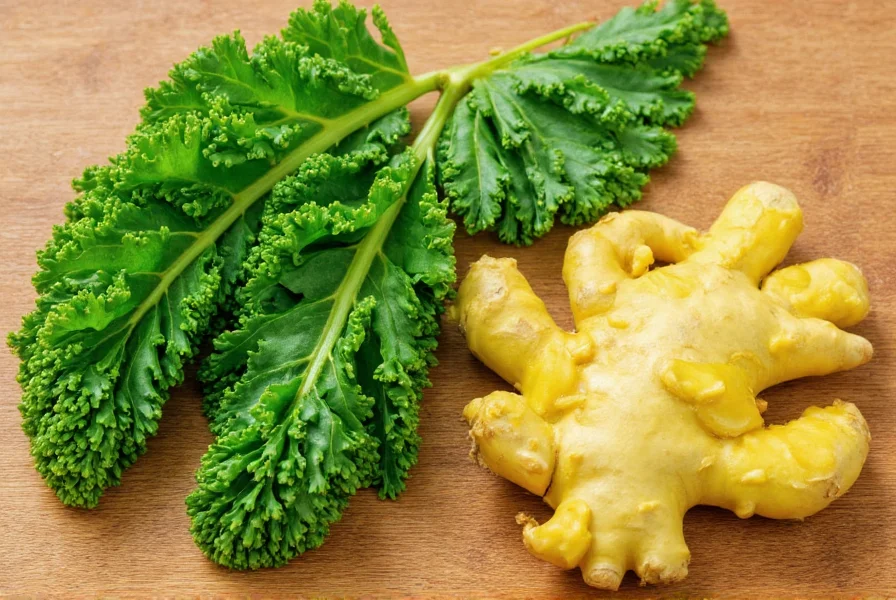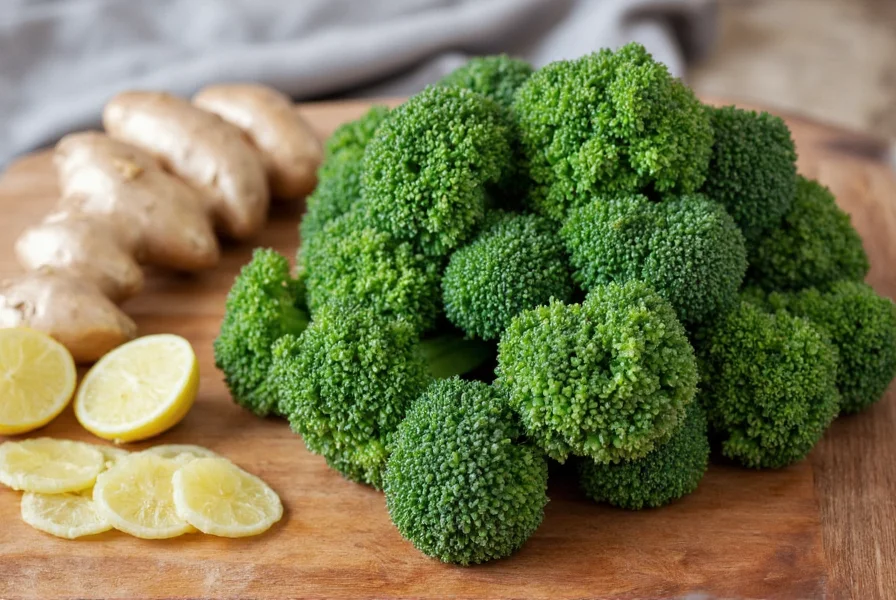When exploring the dynamic pairing of kale and ginger, it's essential to understand why this combination has gained significant attention in nutrition circles. These two ingredients represent powerhouse additions to any health-conscious diet, each bringing unique nutritional profiles that complement one another remarkably well.
Nutritional Powerhouses: Kale and Ginger Compared
| Nutrient | Kale (1 cup raw) | Ginger (1 tbsp fresh) |
|---|---|---|
| Vitamin K | 684% DV | 0.3% DV |
| Vitamin C | 134% DV | 2% DV |
| Antioxidants | Extremely high (quercetin, kaempferol) | High (gingerol, shogaol) |
| Anti-inflammatory Compounds | Moderate | Very high |
| Digestive Benefits | Fiber content supports digestion | Potent digestive enzyme stimulation |
Individual Health Benefits of Kale
Kale stands as one of the most nutrient-dense leafy greens available. This cruciferous vegetable delivers exceptional levels of vitamin K, crucial for blood clotting and bone health. Its impressive vitamin C content surpasses that of an orange by volume, supporting immune function and collagen production. The presence of lutein and zeaxanthin makes kale particularly valuable for eye health, potentially reducing the risk of macular degeneration.
Research shows that regular consumption of kale contributes to cardiovascular health through its ability to reduce LDL cholesterol levels. The sulfur-containing compounds in kale, known as glucosinolates, convert to isothiocyanates during digestion, which may help protect against certain cancers. For those exploring health benefits of kale and ginger combination, understanding kale's individual properties provides essential context.

Therapeutic Properties of Ginger
Ginger root contains bioactive compounds, primarily gingerol, responsible for its potent medicinal properties. Clinical studies demonstrate ginger's effectiveness in reducing nausea, particularly for pregnancy-related morning sickness and chemotherapy-induced nausea. Its anti-inflammatory effects rival some pharmaceutical options, making it valuable for managing osteoarthritis and muscle pain.
The digestive benefits of ginger extend beyond simple nausea relief. It accelerates gastric emptying, reduces bloating, and stimulates digestive enzyme production. When examining kale and ginger for immune system support, ginger's role becomes particularly significant as it enhances immune cell activity while reducing inflammatory markers in the body.
Synergistic Health Effects of Combining Kale and Ginger
The true magic happens when you combine these ingredients. The vitamin C in kale enhances the bioavailability of ginger's beneficial compounds, while ginger improves the absorption of fat-soluble nutrients in kale. This complementary relationship creates what nutrition scientists call a food synergy effect.
For individuals interested in anti-inflammatory properties of kale and ginger, research indicates that their combined effect on reducing inflammatory markers like C-reactive protein exceeds what either ingredient provides alone. The combination also creates a more balanced flavor profile, making healthy eating more enjoyable and sustainable.
Practical Ways to Incorporate Kale and Ginger
Creating delicious combinations of these ingredients doesn't require culinary expertise. Start with simple preparations like massaging kale with lemon juice and olive oil to reduce bitterness, then add freshly grated ginger. For those exploring how to use kale and ginger in daily diet, consider these approaches:
- Blend both into morning smoothies (add apple or pineapple to balance flavors)
- Create vibrant salad dressings using olive oil, lemon, ginger, and kale
- Add to soups and stews during the last few minutes of cooking
- Prepare a simple detoxifying tea with ginger and kale-infused water

Considerations and Potential Side Effects
While generally safe for most people, certain considerations apply when consuming kale ginger smoothie benefits regularly. Kale contains vitamin K, which may interact with blood-thinning medications. Those with gallbladder issues should monitor ginger consumption as it stimulates bile production. Raw kale in excessive amounts may affect thyroid function in susceptible individuals due to goitrogens, though cooking reduces this concern.
The recommended daily intake varies by individual health status, but most nutritionists suggest 1-2 cups of kale and 1-2 grams of ginger daily for optimal benefits without adverse effects. Always consult with a healthcare provider before making significant dietary changes, especially if managing chronic health conditions.
Conclusion
The combination of kale and ginger represents a powerful nutritional strategy for enhancing overall wellness. Their complementary nutrient profiles create synergistic health effects that support immunity, reduce inflammation, and improve digestive health. By understanding the nutritional value of kale and ginger, you can strategically incorporate them into your diet for maximum health benefits without relying on supplements or processed products.
Frequently Asked Questions
What are the primary health benefits of combining kale and ginger?
The combination provides enhanced anti-inflammatory effects, improved immune function, and better digestive health. Kale's high vitamin C content increases the bioavailability of ginger's beneficial compounds, while ginger improves absorption of fat-soluble nutrients in kale, creating a synergistic effect that exceeds their individual benefits.
How much kale and ginger should I consume daily for health benefits?
Most nutritionists recommend 1-2 cups of kale and 1-2 grams of fresh ginger daily. This amount provides significant health benefits without potential side effects. For ginger, this equals approximately 1/2 to 1 teaspoon of freshly grated root. Always adjust based on individual tolerance and consult your healthcare provider if you have specific health conditions.
Can I consume kale and ginger if I'm on blood thinners?
Kale contains high levels of vitamin K, which can interfere with blood-thinning medications like warfarin. If you take these medications, consult your doctor before significantly increasing kale consumption. Ginger in moderate amounts is generally safe, but excessive consumption might enhance blood-thinning effects. Your healthcare provider can help determine appropriate amounts based on your specific medication and health status.
What's the best way to prepare kale and ginger to maximize nutrient absorption?
Massaging raw kale with lemon juice and olive oil breaks down tough fibers and enhances nutrient availability. Adding freshly grated ginger to this preparation maximizes the synergistic effect. For optimal absorption, consume the combination with a source of healthy fat, as many nutrients in kale are fat-soluble. Light cooking (steaming kale briefly) can also improve nutrient bioavailability while preserving most beneficial compounds.











 浙公网安备
33010002000092号
浙公网安备
33010002000092号 浙B2-20120091-4
浙B2-20120091-4